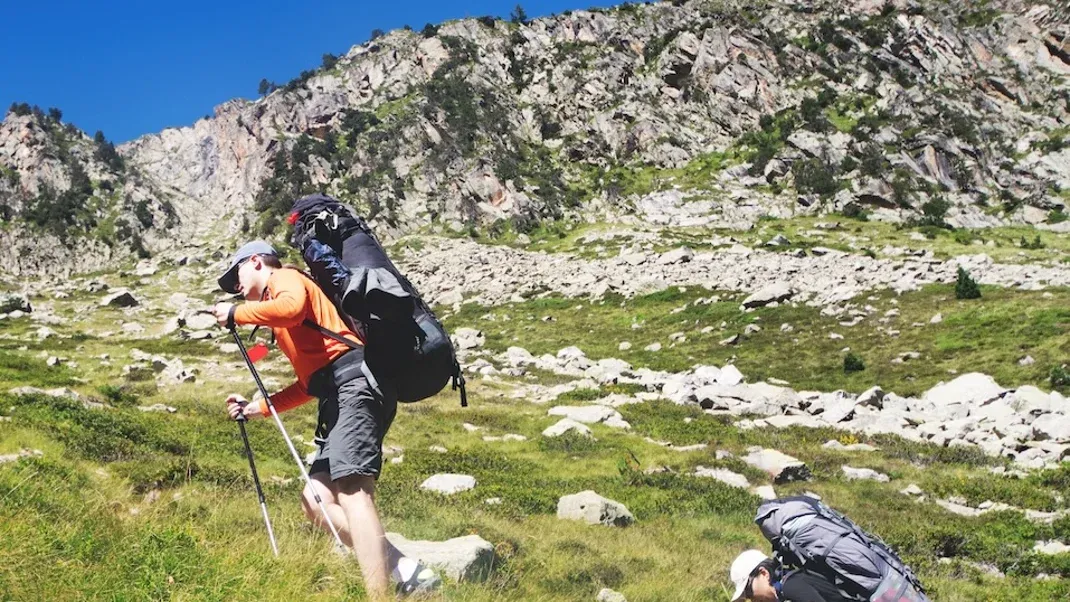The Case for Using Trekking Poles While Going Uphill
Trekking poles are an essential tool for hikers and climbers, especially when going uphill. They provide extra stability and support, reducing strain on the legs and knees. Using trekking poles can also help improve posture and balance, allowing for a more efficient and comfortable ascent. Additionally, they can aid in navigating tricky terrain and can be used to test for stability on uncertain ground. Overall, trekking poles are a valuable asset for anyone looking to tackle steep inclines, providing added confidence and reducing the risk of injury.

Trekking poles have become increasingly popular among outdoor enthusiasts as an essential piece of equipment for hiking, backpacking, and trekking. While many people recognize the benefits of using trekking poles on flat or downhill terrain, there is a growing case for using trekking poles while going uphill as well. In this article, we will explore the various advantages of using trekking poles while ascending and why they are an essential tool for a successful uphill trek.
First and foremost, trekking poles provide stability and balance while ascending steep or uneven terrain. As hikers climb uphill, the body naturally shifts its weight forward, placing a significant amount of stress on the knees, ankles, and lower back. By using trekking poles, hikers can distribute the weight more evenly and reduce the strain on their lower body. This added stability and balance can prevent slips, falls, and injuries, particularly on rocky, loose, or slippery surfaces. With the support of trekking poles, hikers can confidently navigate challenging uphill terrain and maintain their momentum without compromising their safety.
In addition to providing stability and balance, trekking poles also help to reduce the impact on the lower body, especially during steep ascents. When hiking uphill, the legs and joints are subjected to increased pressure and strain as they work against gravity. By using trekking poles, hikers can transfer some of the workload to their upper body, thereby reducing the strain on their legs, knees, and hips. This can be particularly beneficial for those with existing joint pain, arthritis, or other musculoskeletal issues, allowing them to continue enjoying uphill treks without exacerbating their condition.
Furthermore, trekking poles can improve overall endurance and stamina while ascending. By engaging the upper body and arm muscles, hikers can effectively share the workload between their upper and lower body, reducing fatigue and conserving energy. This can be especially advantageous during long, arduous uphill climbs, where every step requires significant effort. With the assistance of trekking poles, hikers can maintain a steady pace, reduce the strain on their muscles, and ultimately sustain their energy levels for the duration of the ascent.
Another compelling reason to use trekking poles while going uphill is the added support and assistance they provide when carrying a heavy backpack. When hiking with a loaded pack, the additional weight can throw off the hiker's balance and stability, making the ascent even more challenging. Trekking poles can help to counteract this imbalance by providing extra support and leverage, allowing hikers to carry their backpack more comfortably and confidently. This can be particularly beneficial for backpackers and mountaineers who frequently tackle steep and rugged terrain with heavy loads.
Moreover, trekking poles can enhance the overall hiking experience by promoting proper posture and alignment while ascending. As hikers use the poles to propel themselves forward, they naturally engage their core muscles and maintain an upright stance, which can prevent slouching, leaning, or hunching over. This improved posture not only reduces the risk of back and neck strain but also ensures that hikers are breathing efficiently and maximizing their oxygen intake. By maintaining proper alignment and posture, hikers can optimize their performance and endurance during uphill treks.
Additionally, trekking poles offer versatility and adaptability, allowing hikers to customize their grip and length to suit the terrain and their individual needs. Most trekking poles are adjustable, featuring telescoping shafts that can be extended or retracted to accommodate different inclines and preferences. This adjustability enables hikers to optimize their pole length for maximum comfort and efficiency, whether they are tackling steep switchbacks, scrambling over boulders, or traversing variable terrain. Furthermore, the ergonomic handles and wrist straps of trekking poles provide a secure and comfortable grip, allowing hikers to maintain control and confidence as they ascend.
In conclusion, the case for using trekking poles while going uphill is compelling and multifaceted. From providing stability and balance to reducing impact and fatigue, trekking poles offer a myriad of benefits for uphill treks. Whether navigating steep inclines, carrying a heavy load, or seeking to enhance endurance, hikers can greatly benefit from the support and assistance of trekking poles. With their versatility and adaptability, trekking poles have become an indispensable tool for ascending and are a valuable asset for anyone looking to conquer challenging uphill terrain with confidence and ease.




